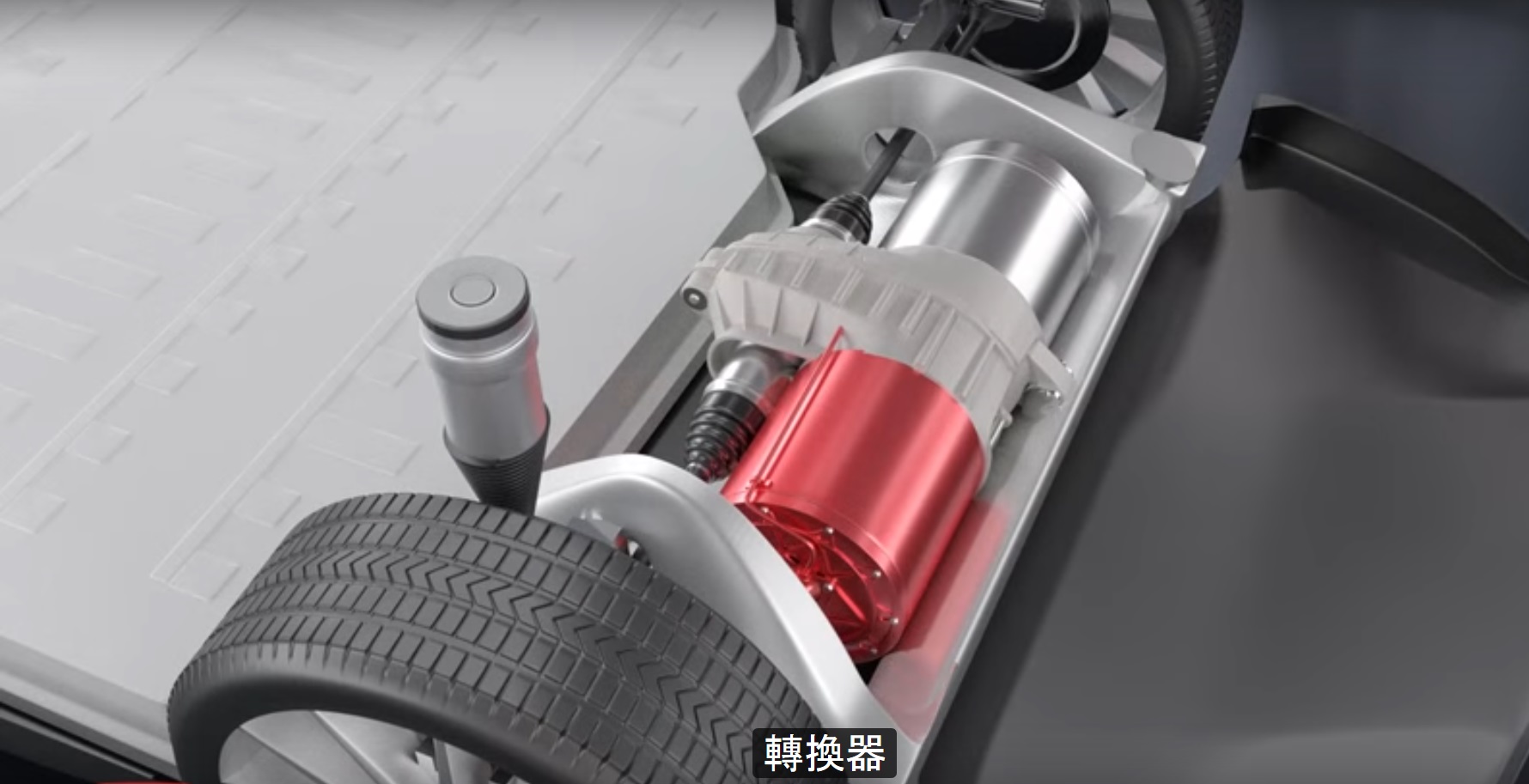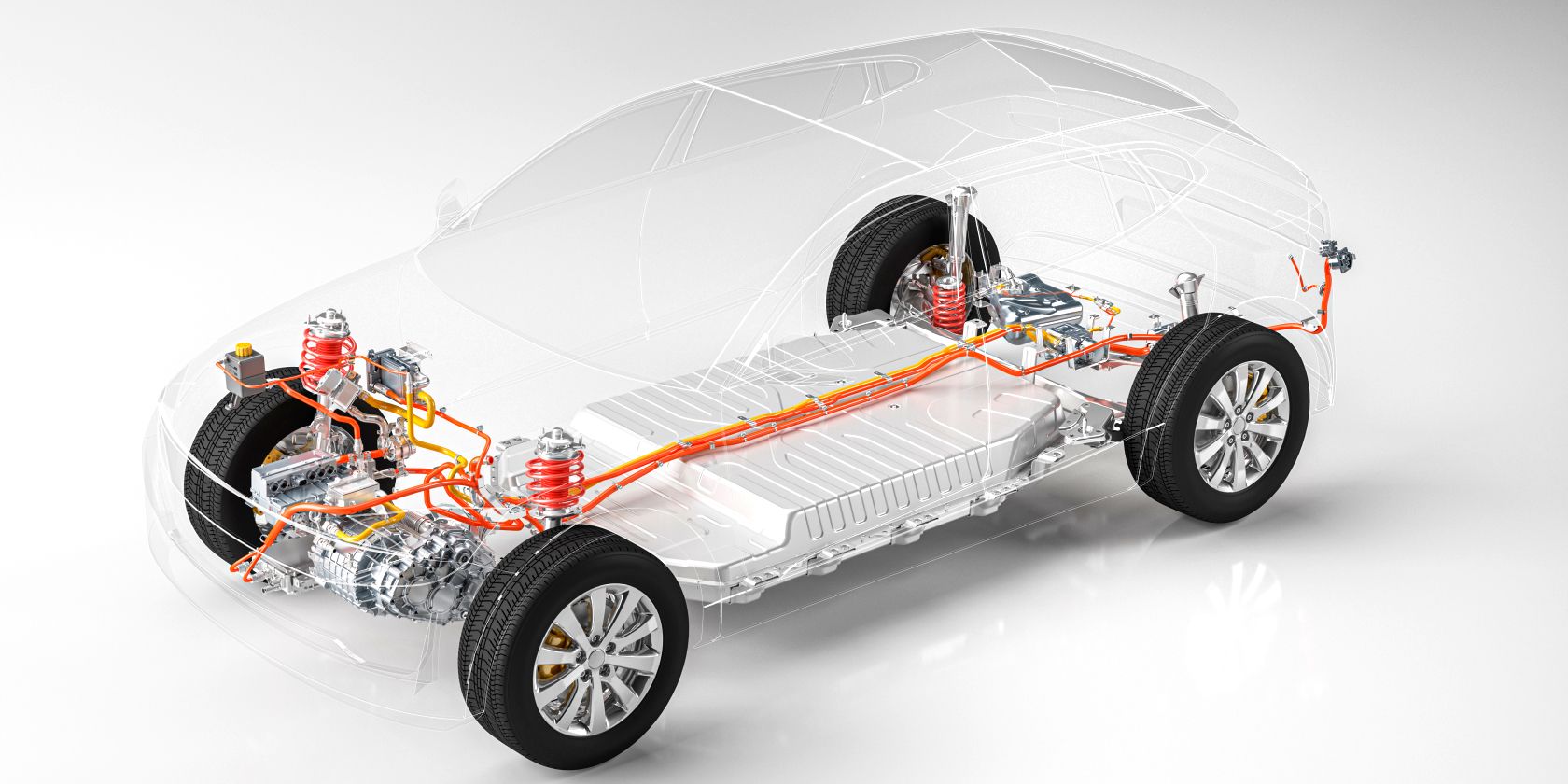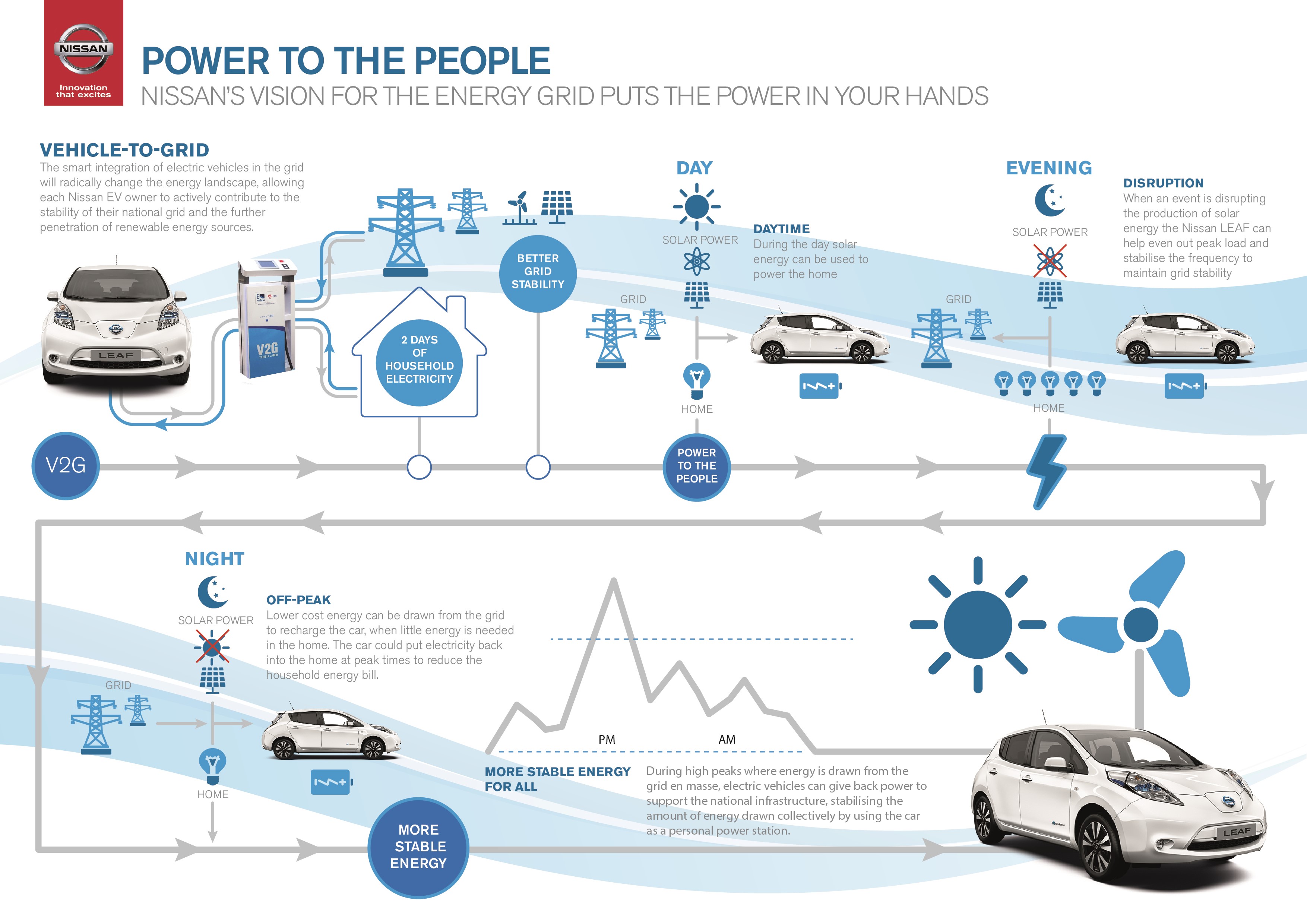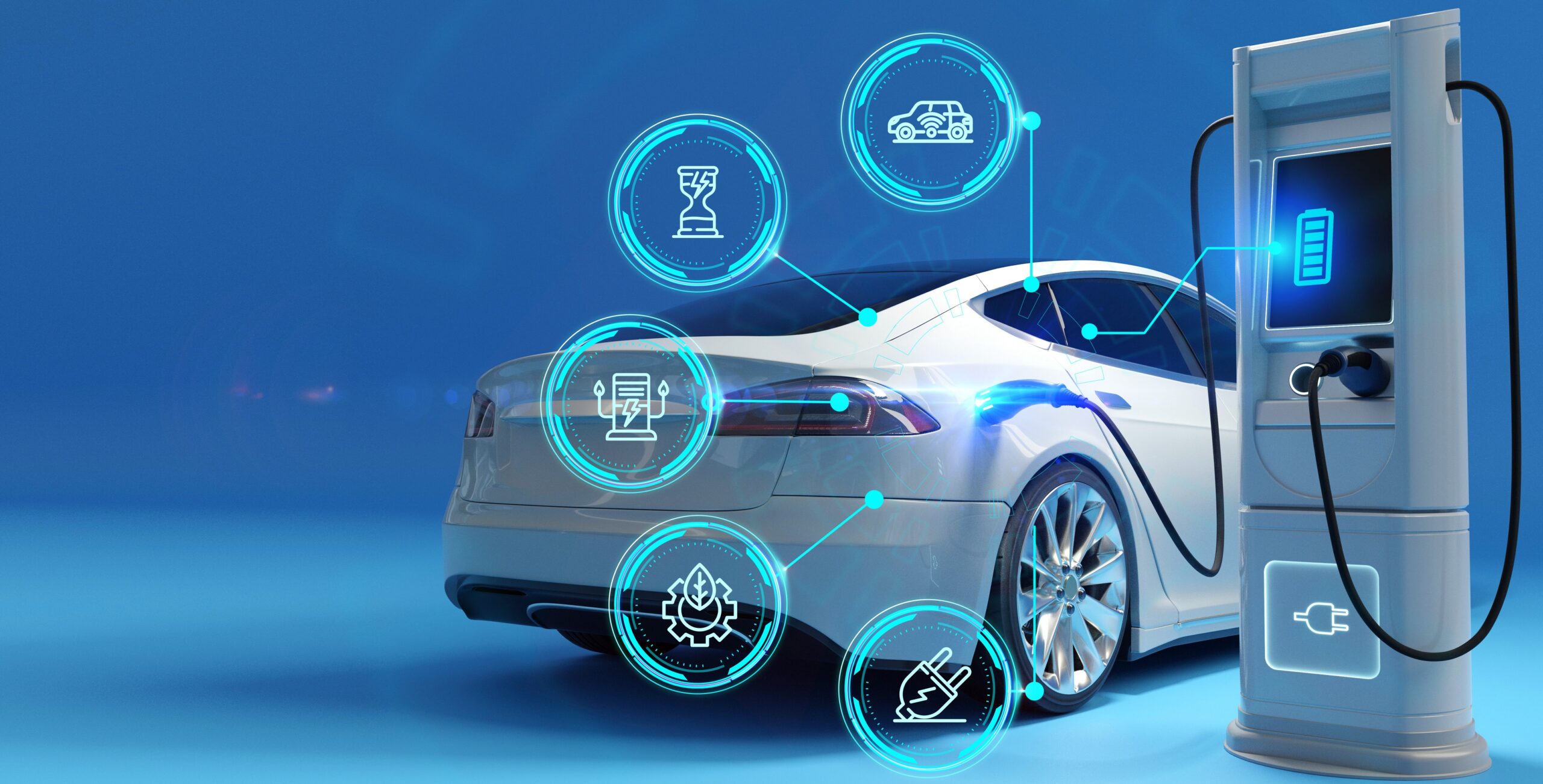Unlocking the Potential of Electric Motors: Key Trends and Insights
The electric motor and electric vehicle innovation strategies are transforming the transportation sector, driven by recent advancements in technology and emerging trends. One of the key trends is the increasing adoption of electric motors in various applications, including electric vehicles (EVs), hybrid electric vehicles (HEVs), and plug-in hybrid electric vehicles (PHEVs). This trend is driven by the growing demand for sustainable and environmentally friendly transportation solutions.
Another significant trend is the development of advanced electric motor technologies, such as permanent magnet motors, induction motors, and switched reluctance motors. These technologies offer improved efficiency, power density, and reliability, making them ideal for EV applications. Additionally, the use of advanced materials, such as rare earth magnets and high-temperature superconductors, is enhancing the performance and efficiency of electric motors.
The impact of these developments on the EV industry is significant. Electric vehicles are becoming increasingly popular, with many countries investing heavily in EV infrastructure and incentivizing the adoption of EVs. The growth of the EV market is driving innovation in electric motor technology, with manufacturers competing to develop more efficient, sustainable, and cost-effective solutions.
Furthermore, the integration of electric motors with other technologies, such as battery management systems and power electronics, is enabling the development of more efficient and sustainable EVs. The use of advanced simulation tools and modeling techniques is also facilitating the design and optimization of electric motors for EV applications.
Overall, the electric motor and electric vehicle innovation strategies are driving significant advancements in the transportation sector. As the demand for sustainable and environmentally friendly transportation solutions continues to grow, the development of advanced electric motor technologies and innovative EV designs will play a critical role in shaping the future of transportation.
How to Optimize Electric Motor Design for Enhanced Efficiency and Performance
Optimizing electric motor design is crucial for achieving enhanced efficiency and performance in electric vehicles (EVs). The design considerations for electric motors involve a range of factors, including materials selection, thermal management, and electromagnetic design. By carefully considering these factors, manufacturers can develop electric motors that deliver improved efficiency, power density, and reliability.
One of the key considerations in electric motor design is materials selection. The choice of materials can significantly impact the performance and efficiency of the motor. For example, the use of high-temperature superconductors can enable the development of more efficient and compact motors. Similarly, the use of advanced magnetic materials can improve the motor’s power density and efficiency.
Thermal management is another critical aspect of electric motor design. Electric motors generate heat during operation, which can impact their performance and lifespan. Effective thermal management strategies, such as the use of advanced cooling systems and thermal interface materials, can help to mitigate these effects and ensure optimal motor performance.
Electromagnetic design is also a crucial consideration in electric motor design. The electromagnetic design of the motor determines its efficiency, power density, and reliability. Advanced electromagnetic design techniques, such as finite element analysis and optimization algorithms, can help to optimize the motor’s performance and efficiency.
In addition to these design considerations, manufacturers can also use various optimization techniques to enhance the performance and efficiency of electric motors. For example, the use of multi-objective optimization algorithms can help to balance competing design objectives, such as efficiency and power density. Similarly, the use of machine learning algorithms can help to optimize the motor’s performance and efficiency in real-time.
By incorporating these design considerations and optimization techniques, manufacturers can develop electric motors that deliver enhanced efficiency and performance in EVs. This, in turn, can help to drive the adoption of EVs and support the development of more sustainable transportation systems. As the demand for EVs continues to grow, the importance of optimizing electric motor design will only continue to increase, making it a critical aspect of electric motor and electric vehicle innovation strategies.
The Role of Advanced Materials in Electric Vehicle Innovation
Advanced materials are playing a crucial role in the development of electric vehicles (EVs), enabling the creation of more efficient, sustainable, and cost-effective vehicles. One of the most significant advancements in EV technology has been the development of lithium-ion batteries, which have improved the range and efficiency of EVs. However, researchers are now exploring new materials and technologies to further enhance EV performance.
Graphene, a highly conductive and flexible material, is one of the most promising new materials for EV applications. Graphene-based batteries have shown significant improvements in energy density and charging speed, making them an attractive option for EV manufacturers. Additionally, graphene-based supercapacitors are being developed to improve the efficiency and reliability of EV powertrains.
Other advanced materials, such as advanced ceramics and nanomaterials, are also being explored for EV applications. These materials offer improved thermal management, reduced weight, and enhanced durability, making them ideal for EV components such as motors, batteries, and power electronics.
The use of advanced materials in EVs is not only improving their performance but also reducing their environmental impact. For example, the use of recycled materials in EV production is becoming increasingly popular, reducing waste and the demand for primary materials. Additionally, the development of biodegradable materials for EV components is being explored, offering a more sustainable end-of-life solution for EVs.
The integration of advanced materials into EVs is also driving innovation in electric motor and electric vehicle innovation strategies. As EV manufacturers continue to push the boundaries of what is possible with advanced materials, we can expect to see significant improvements in EV performance, efficiency, and sustainability. The use of advanced materials is a key factor in the development of more efficient and sustainable EVs, and their impact will only continue to grow as the demand for EVs increases.
Furthermore, the development of advanced materials is also enabling the creation of new EV business models and revenue streams. For example, the use of advanced materials in EV batteries is enabling the development of battery-as-a-service models, where EV manufacturers can offer battery leasing and recycling services to customers. This is just one example of how advanced materials are driving innovation in the EV industry and enabling new business opportunities.
Electric Vehicle Charging Infrastructure: Strategies for Widespread Adoption
The widespread adoption of electric vehicles (EVs) is dependent on the development of a comprehensive and convenient charging infrastructure. As the demand for EVs continues to grow, the need for efficient and reliable charging systems is becoming increasingly important. In this article, we will explore the different charging technologies and strategies that are being implemented to support the widespread adoption of EVs.
Fast-charging systems are one of the most promising charging technologies for EVs. These systems can charge an EV’s battery to 80% in under 30 minutes, making them ideal for long-distance driving. Companies such as Tesla and ChargePoint are already implementing fast-charging networks along highways and in urban areas.
Wireless charging is another technology that is gaining traction in the EV industry. This technology allows EVs to be charged without the need for a physical connection, making it a convenient and efficient way to charge vehicles. Companies such as WiTricity and Qualcomm are already developing wireless charging systems for EVs.
Smart charging networks are also being developed to optimize the charging process and reduce strain on the grid. These networks use advanced algorithms and real-time data to manage the flow of energy and ensure that EVs are charged during off-peak hours. Companies such as Siemens and Schneider Electric are already implementing smart charging networks in various cities around the world.
In addition to these charging technologies, governments and companies are also investing in the development of public charging infrastructure. Public charging stations are being installed in shopping centers, parking garages, and along highways, making it easier for EV owners to charge their vehicles on the go.
The development of a comprehensive and convenient charging infrastructure is critical to the widespread adoption of EVs. As the demand for EVs continues to grow, the need for efficient and reliable charging systems will only continue to increase. By investing in the development of charging infrastructure, governments and companies can help to drive the adoption of EVs and reduce our reliance on fossil fuels.
Furthermore, the development of charging infrastructure is also driving innovation in electric motor and electric vehicle innovation strategies. As companies continue to develop new charging technologies and strategies, we can expect to see significant improvements in EV performance, efficiency, and sustainability. The integration of charging infrastructure into EVs is a key factor in the development of more efficient and sustainable EVs, and its impact will only continue to grow as the demand for EVs increases.
Autonomous Electric Vehicles: The Future of Transportation
Autonomous electric vehicles (EVs) are poised to revolutionize the transportation industry, offering a sustainable, efficient, and safe mode of transportation. Autonomous EVs use a combination of sensors, software, and hardware to navigate roads and traffic patterns without human intervention. This technology has the potential to transform urban mobility, reduce traffic congestion, and improve road safety.
The development of autonomous EVs is being driven by advances in electric motor and electric vehicle innovation strategies. Companies such as Tesla, Waymo, and Cruise are investing heavily in the development of autonomous EVs, with a focus on improving safety, efficiency, and sustainability. Autonomous EVs are also being tested and deployed in various cities around the world, with promising results.
One of the key benefits of autonomous EVs is their potential to improve road safety. According to the National Highway Traffic Safety Administration (NHTSA), human error is responsible for 94% of all crashes. Autonomous EVs can detect and respond to hazards more quickly and accurately than human drivers, reducing the risk of accidents and injuries.
Autonomous EVs also offer significant environmental benefits. Electric vehicles produce zero tailpipe emissions, reducing greenhouse gas emissions and air pollution in urban areas. Autonomous EVs can also optimize energy consumption and reduce waste by improving routing and reducing energy consumption.
However, there are also challenges to widespread adoption of autonomous EVs. One of the main challenges is regulatory frameworks, which vary widely from country to country. There is also a need for public education and awareness about the benefits and limitations of autonomous EVs.
Despite these challenges, the potential benefits of autonomous EVs make them an exciting and promising area of innovation. As electric motor and electric vehicle innovation strategies continue to evolve, we can expect to see significant improvements in autonomous EV technology, leading to safer, more efficient, and more sustainable transportation systems.
Furthermore, the development of autonomous EVs is also driving innovation in other areas, such as smart cities and urban planning. Autonomous EVs can be integrated with smart traffic management systems, optimizing traffic flow and reducing congestion. They can also be used to improve public transportation systems, providing more efficient and sustainable transportation options for citizens.
Electric Motor and Vehicle Innovation: A Look at Industry Leaders and Startups
The electric motor and electric vehicle innovation landscape is rapidly evolving, with industry leaders and startups driving innovation in electric motor and vehicle technology. Companies such as Tesla, Lucid Motors, and Rimac are at the forefront of this innovation, pushing the boundaries of what is possible with electric vehicles (EVs).
Tesla, for example, has been a pioneer in the EV industry, with a range of models that have disrupted the traditional automotive market. The company’s approach to EV design, manufacturing, and sustainability has set a new standard for the industry, with a focus on performance, efficiency, and environmental sustainability.
Lucid Motors, on the other hand, is a startup that is making waves in the EV industry with its innovative approach to electric motor design and vehicle manufacturing. The company’s flagship model, the Lucid Air, boasts an impressive range of over 500 miles and a 0-60mph time of just 2.5 seconds.
Rimac, a Croatian startup, is another company that is pushing the boundaries of electric motor and vehicle innovation. The company’s flagship model, the Rimac C_Two, is a high-performance EV that boasts an impressive 1,914 horsepower and a 0-60mph time of just 1.85 seconds.
These companies, along with others, are driving innovation in electric motor and vehicle technology, with a focus on performance, efficiency, and sustainability. Their approaches to EV design, manufacturing, and sustainability are setting a new standard for the industry, and their commitment to innovation is helping to drive the adoption of EVs worldwide.
Furthermore, the innovation strategies employed by these companies are also driving the development of new business models and revenue streams. For example, Tesla’s approach to over-the-air software updates has created a new revenue stream for the company, while Lucid Motors’ focus on luxury and performance has created a new market segment for high-end EVs.
As the electric motor and electric vehicle innovation landscape continues to evolve, we can expect to see even more innovative approaches to EV design, manufacturing, and sustainability. The companies that are driving this innovation are helping to shape the future of transportation, and their commitment to innovation is creating new opportunities for growth and development in the EV industry.
Sustainable Electric Vehicle Manufacturing: Strategies for Reducing Environmental Impact
The electric vehicle (EV) industry has made significant strides in reducing greenhouse gas emissions and promoting sustainable transportation. However, the environmental impact of EV manufacturing remains a concern. As the demand for EVs continues to grow, it is essential to adopt sustainable manufacturing strategies that minimize waste, reduce energy consumption, and promote the use of renewable energy sources.
One of the primary challenges in sustainable EV manufacturing is the sourcing of materials. The extraction and processing of raw materials, such as lithium, cobalt, and nickel, can have devastating environmental and social consequences. To mitigate these impacts, manufacturers can adopt responsible sourcing practices, such as using recycled materials, reducing material waste, and implementing supply chain transparency.
Energy consumption is another critical area of focus in sustainable EV manufacturing. Traditional manufacturing processes rely heavily on fossil fuels, which contribute to greenhouse gas emissions and climate change. To reduce energy consumption, manufacturers can transition to renewable energy sources, such as solar and wind power, and implement energy-efficient technologies, such as LED lighting and smart grids.
Waste management is also a significant concern in EV manufacturing. The production of EVs generates a substantial amount of waste, including hazardous materials, such as batteries and electronics. To minimize waste, manufacturers can implement recycling programs, reduce packaging, and design products for recyclability.
Circular economy principles can also play a crucial role in sustainable EV manufacturing. By designing products and processes that are restorative and regenerative, manufacturers can reduce waste, promote recycling, and conserve resources. For example, manufacturers can design EV batteries that can be easily recycled or reused, reducing the demand for primary materials and minimizing waste.
Several companies are already leading the way in sustainable EV manufacturing. For instance, Tesla has implemented a range of sustainable manufacturing practices, including the use of renewable energy, reducing water consumption, and implementing recycling programs. Other companies, such as BMW and Volkswagen, are also investing in sustainable manufacturing technologies and practices.
In conclusion, sustainable EV manufacturing is critical to reducing the environmental impact of the EV industry. By adopting responsible sourcing practices, reducing energy consumption, minimizing waste, and implementing circular economy principles, manufacturers can promote sustainable transportation and reduce their environmental footprint. As the EV industry continues to grow, it is essential to prioritize sustainable manufacturing strategies to ensure a more environmentally friendly and responsible future.
Electric motor and electric vehicle innovation strategies play a crucial role in promoting sustainable transportation and reducing environmental impact. By investing in sustainable manufacturing technologies and practices, manufacturers can reduce waste, promote recycling, and conserve resources. As the demand for EVs continues to grow, it is essential to prioritize sustainable manufacturing strategies to ensure a more environmentally friendly and responsible future.
The Future of Electric Motor and Vehicle Innovation: Emerging Trends and Opportunities
As the world continues to shift towards sustainable mobility solutions, electric motor and vehicle innovation strategies are playing a crucial role in driving growth and development in the industry. Emerging trends and opportunities are transforming the landscape of electric vehicle (EV) manufacturing, and companies that adapt to these changes will be well-positioned for success.
One of the most significant emerging trends in electric motor and vehicle innovation is the integration of artificial intelligence (AI) and machine learning (ML) technologies. AI-powered EVs can optimize energy consumption, predict maintenance needs, and enhance overall performance. Companies like Tesla and Lucid Motors are already leveraging AI to improve their EV designs and manufacturing processes.
Another trend gaining momentum is the use of advanced materials in EV manufacturing. Graphene, nanomaterials, and other cutting-edge materials are being used to improve battery efficiency, reduce weight, and increase overall performance. These advancements will enable the development of more efficient, sustainable, and cost-effective EVs.
The rise of autonomous EVs is also transforming the transportation landscape. Autonomous vehicles can optimize energy consumption, reduce emissions, and improve safety. Companies like Waymo and Cruise are already testing autonomous EVs on public roads, and widespread adoption is expected in the near future.
In addition to these trends, there are also opportunities for innovation in EV charging infrastructure. Fast-charging systems, wireless charging, and smart charging networks are being developed to support the widespread adoption of EVs. Companies like ChargePoint and EVgo are already investing heavily in EV charging infrastructure, and this trend is expected to continue.
Electric motor and vehicle innovation strategies are also being driven by government policies and regulations. Governments around the world are implementing incentives and regulations to encourage the adoption of EVs, and companies that adapt to these changes will be well-positioned for success.
In conclusion, the future of electric motor and vehicle innovation is exciting and rapidly evolving. Emerging trends and opportunities are transforming the industry, and companies that adapt to these changes will be well-positioned for success. By leveraging AI, advanced materials, autonomous technologies, and innovative charging solutions, companies can drive growth and development in the EV industry and create a more sustainable future for transportation.






